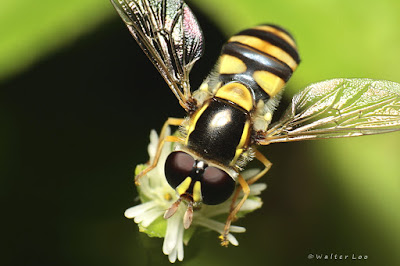This afternoon, I got a text from my daughter that her boyfriend's sister's room had been infested by termites! Not surprisingly, without a pause, she asked if I would like to have some!
Of course, I never say "No" to this kind of request. Just to be on the safe side, I asked her to get a few more, plus the wood that they had been feeding on.
"It is going to be an exciting evening", I thought.
Yes, indeed. Here are some photos of the cute termites, both the Coptotermes gestroi soldiers as well as workers. The termites are about 3.0mm long. Do enjoy, if you like termites!
The little termites are busy fellows, as they explore their new facility. Thanks to the safe method of containing them, the termites arrived at my home in good health.
Here, a worker (creamy-white) is seen "kissing" a fellow soldier. Actually, not. It is trying to move to the right when the soldier termite makes a left turn. When you are looking through a macro lens, you tend to see them as individuals, rather than a mass of termites.
The container that I used to keep them toppled over and some died as a result. I also did a few checks - non escaped! A soldier is seen here checking out a dead comrade. On the right is a worker.
A top-view of a soldier doing a scan of the area below.
Side view of the same soldier. This time it has decided that it is safe to make a down-hill trip from the original wood that it came from. The bottom-right object at the foreground is a grain of sand.
You can clearly see the fontanelle on the forehead of the soldier. A white latex-like droplet is often secreted from the fontanelle when challenged. An article from [https://taxo4254.wikispaces.com/Coptotermes+gestroi] mentions that the defensive secretion can represent up to almost 40% of the body weight!
The same soldier taking a long look.
A gathering of friends.
Two soldiers communicating with each other. What information could they be passing on?
Here, a soldier has a grain of sand stuck to its forehead, as a result of the defensive secretion earlier on. Notice the "glue-like" thing on its right pincer? The sticky stuff is supposed to act as a buffer zone between the soldiers and other attackers. Ants are their enemies and this sticky stuff will actually hold an unfortunate ant at bay while another soldier kills it off.
Finally, a sentinel standing guard.




















































